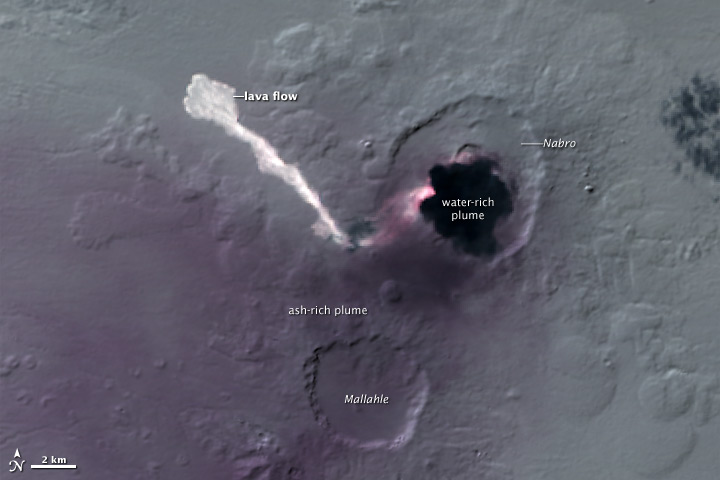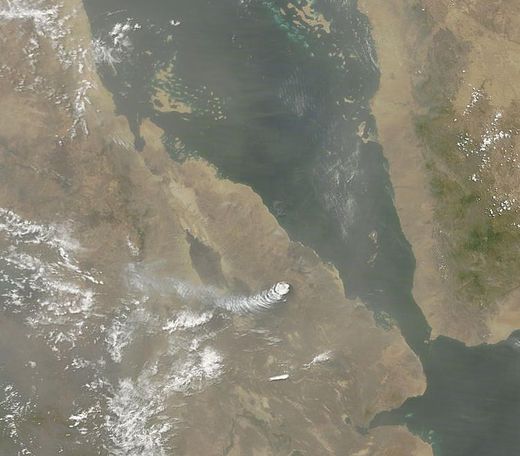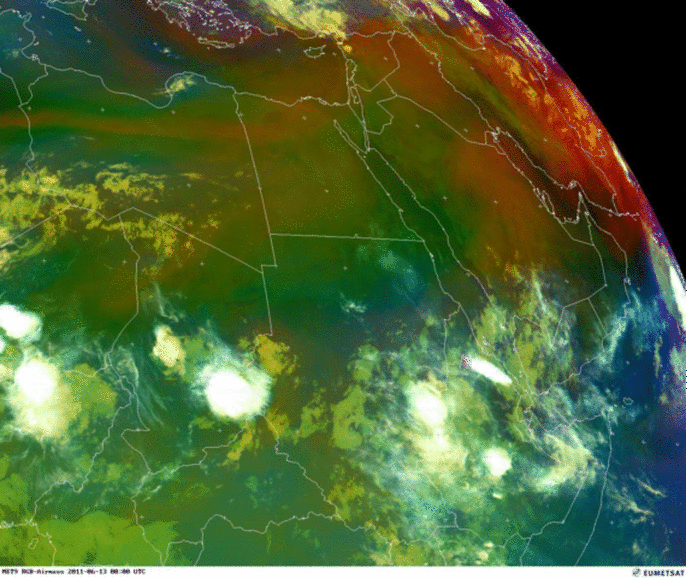Eritrean TV (Eri.TV) today broadcast images of the volcano which erupted for the first time in its history on Sunday 12 June last. The volcano continued to erupt Wednesday sending ash northwestards toward Sudan.
Meanwhile, the eruption of the stratovolcano has created a new landmass, according to the director general of Mines at the Ministry of Energy and Mines, Mr. Alem Kibreab.
Mr. Alem said that the ash and lava emitted from the Southern Red Sea region volcano has created a new land mass measuring hundreds of square metres. The director general also disclosed that a team composed of geological and volcanic experts is conducting studies in the area.
Meanwhile, according to reports, 7 people have died while 3 people have sustained injuries due to the eruption. The Ministry confirmed that inhabitants of the area have been moved to safer locations while at the same time they are being given basic provisions.
Nabro began erupting on Sunday 12 June, 2011, the first ever recorded eruption of the stratovolcano. The resultant ash plume, extending up to 15km into the air, led to some flight cancellations in neighbouring Sudan, Djibouti and Ethiopia. The ash cloud was carried as far away as Saudi Arabia, Israel, Turkmenistan, Somalia, the Central African Republic (CAR) and Egypt. A second eruption Thursday sent a massive ash plume westnorthwest over Sudan threatening to bring further disruption to air traffic in the east Africa region. The volcano continued to emit smaller amounts of ash during the weekend, and during Monday, Tuesday and Wednesday.


Nabro is the most prominent of 3 large volcanoes (Nabro, Dubbi, Mallahle) in the region, each containing a large summit caldera. Nabro comprises lava domes, lava flows, and two calderas, 8 and 5 km in diameter.
The volcano is located along the Great Rift Valley, also known as the East African Rift. the divergent plate boundary extends from the Afar Triple Junction southward across eastern Africa, and is in the process of splitting the African Plate into two new separate plates, the Nubian Plate and the Somali Plate. Seismic activity is frequent in Ethiopia In 1961 alone three thousand tremors were recorded from the centre of the Wollo province resulting in a 20km fissure being opened on the slopes of the Borkena graben.





Reader Comments
to our Newsletter